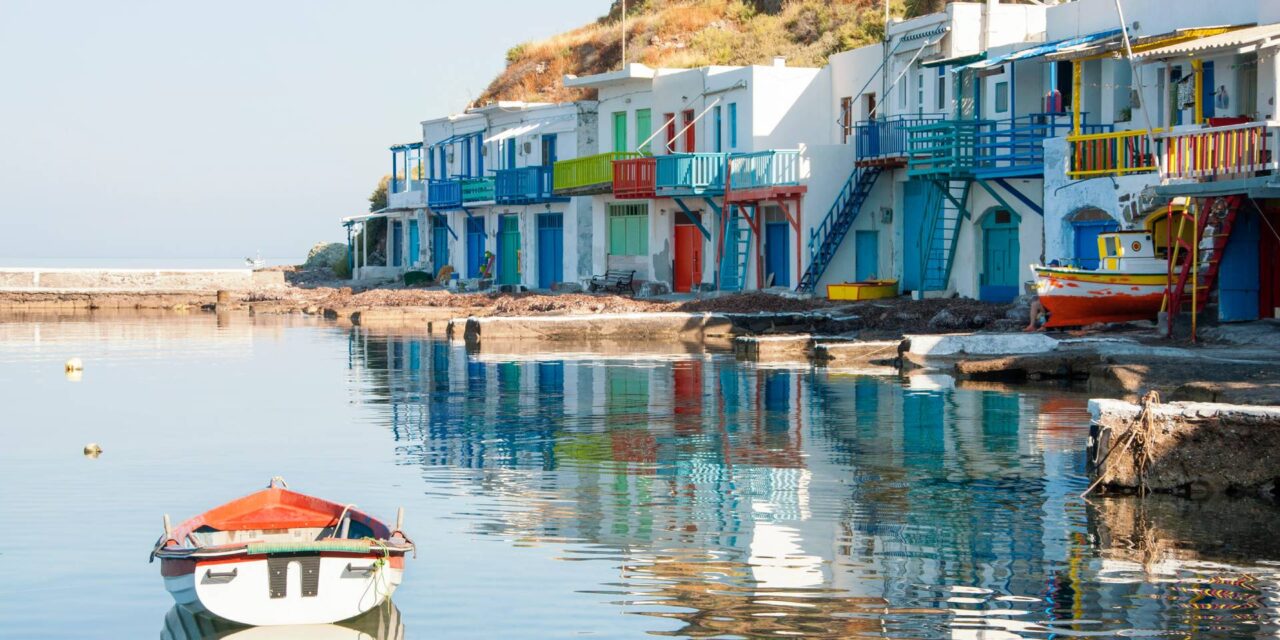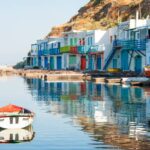The “syrmata” (wires) buildings on the island of Milos are traditional small, single-room structures built directly along the coast in small fishing villages. Historically, they were used as boat storage, as shelters during the harsh winter months, or as workshops. They are either fully or partially carved into the volcanic rocks of the island and are just large enough to store a boat (typically about 6 meters long). Some “syrmata” were expanded with a second floor, providing living space for the fishermen. They are characterized by colorful, vibrant wooden doors. The fishermen typically selected the same color for the “syrmata” as their boat, as the buildings were frequently painted with leftover paint from painting the boats. Blue, red, and yellow were the most common colors. They can be found as individual buildings or in groups, usually arranged in a radial layout along the shoreline, following the natural shape of a sheltered bay. (Cover photo: Klima, a traditional fishing village with colorful two-story “syrmata” built into the natural cavities of the rocks, Source: visit.milos.gr)
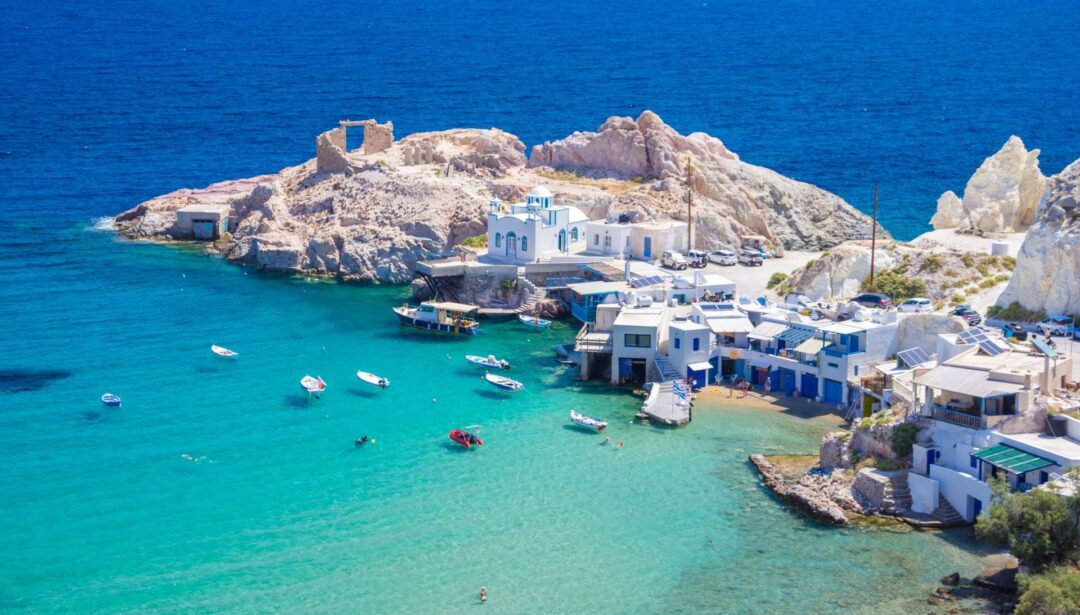
Firopotamos, a seaside settlement with a creek surrounded by “syrmata”
In total, there are 14 closely-knit groups of “syrmata” on Milos. Most of them are located in the northern and eastern parts of the island, in coastal areas and fishermen villages such as Aghios Konstantinos, Alogomandra, Empourios, Kaminia, Mandrakia, Mytakas, Pachaina, Provatas, Schinopi, Fyriplaka and Fyropotamos, as well as in the traditional settlements of Klima, Areti and Fourkovouni.
“Syrmata” are an example of adaptive architecture—buildings that were designed with specific practical purposes in mind, but over time, they have evolved into an integral and iconic part of the island’s architectural, cultural and tourism landscape.

Colorful “syrmata” at Firopotamos, nestled in the white volcanic rocks
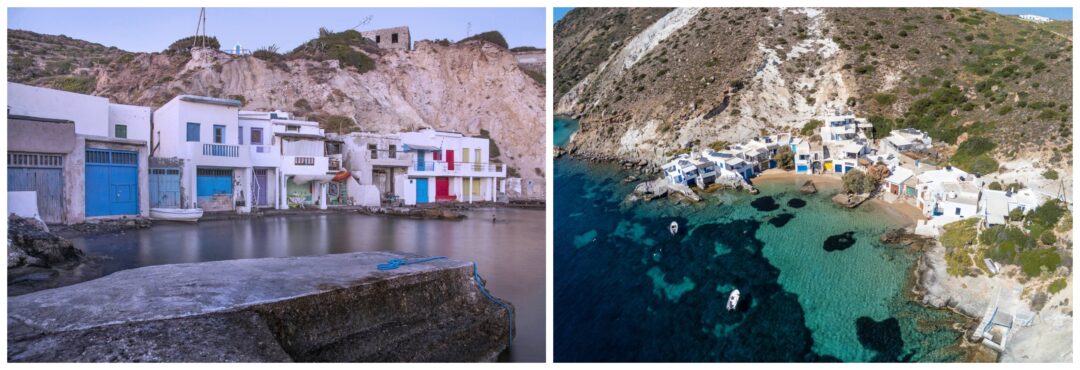
Areti (left) and Fourkovouni (right), small fishing villages with colorful “syrmata” (Source: visit.milos.gr)
In recent years, many “syrmata” buildings have lost their traditional function as boat storage facilities and are being converted into private residences or tourist accommodations, often with incongruous additions. In an effort to halt alterations to these local treasures, the General Secretariat for the Aegean and Island Policy has decided to classify them as protected edifices. An initial group of 52 buildings in Mandrakia has already received this status.
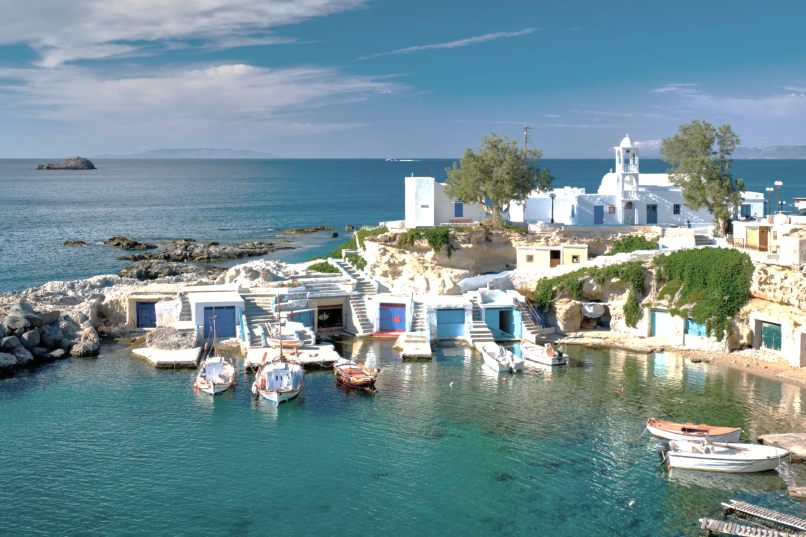
Mandrakia, a traditional fishing village, surrounded by colorful “syrmata”
Manolis Koutoulakis, General Secretary for the Aegean and Island Policy, told Kathimerini newspaper that “the syrmata are an image closely tied to Milos, a part of the island’s intangible cultural heritage. They are fine examples of local architectural tradition and landmarks of the island”. “The first attempt to record and protect them was made many years ago but was never completed. We decided to restart the process recently with the help of the Department for Preserved Buildings and Natural Beauty, due to the growing pressure to turn them into accommodations – something that leads to the distortion of these structures and the loss of their character. In total, there are 14 closely-knit groups of “syrmata” on Milos (we are not focusing on individual ones), and we’re starting with Mandrakia, one of the best-preserved clusters.” (Source: Kathimerini newspaper)
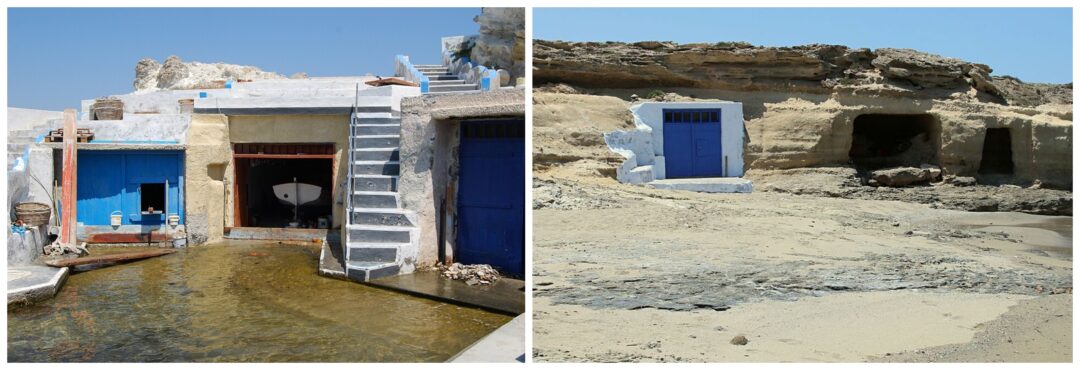
“Syrmata” at Mandrakia (left – commons.wikimedia.org), “Syrmata” at Mytakas carved into volcanic rocks (right – commons.wikimedia.org)
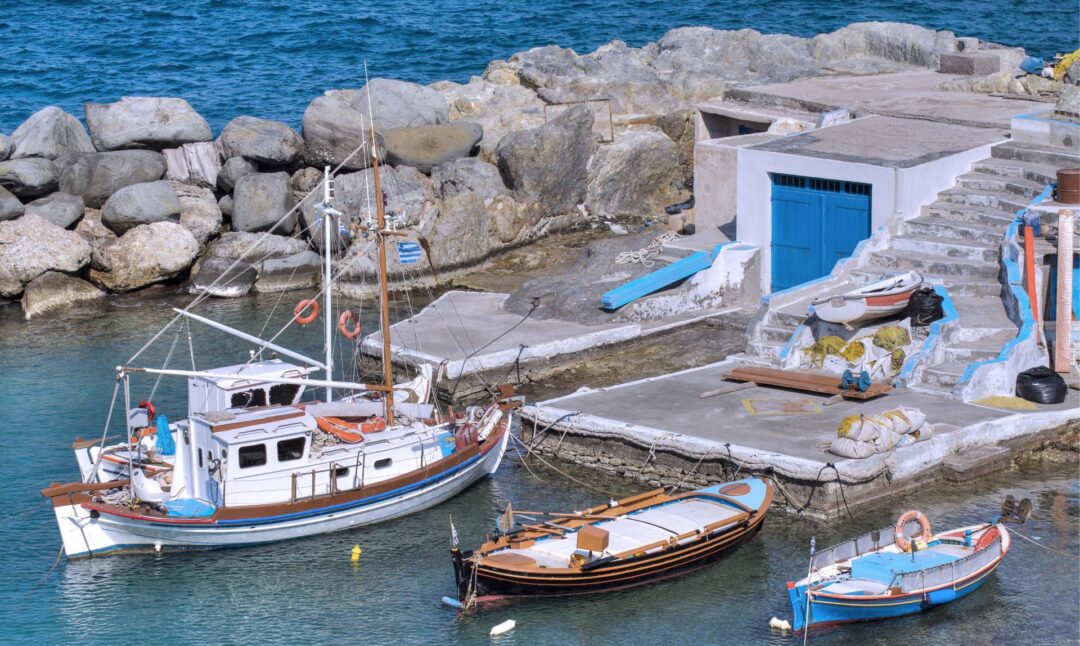
Traditional fishing boats (kaikia) at Mandrakia
The General Secretariat’s decision requires that designated buildings be preserved in their original form, excluding later additions, and that surrounding features like pathways, courtyards and stairways be protected as well. Any modifications to the “syrmata” must be removed, restoring their original appearance. The most significant and controversial aspect is the strict limits on their use. Beyond their original purpose as boat shelters or private residences, only small local product shops, cultural venues (e.g., exhibition areas, folk museums or art workshops), and local association offices will be permitted. Accommodations would require a tourism license, which is not feasible due to the design of the structures.
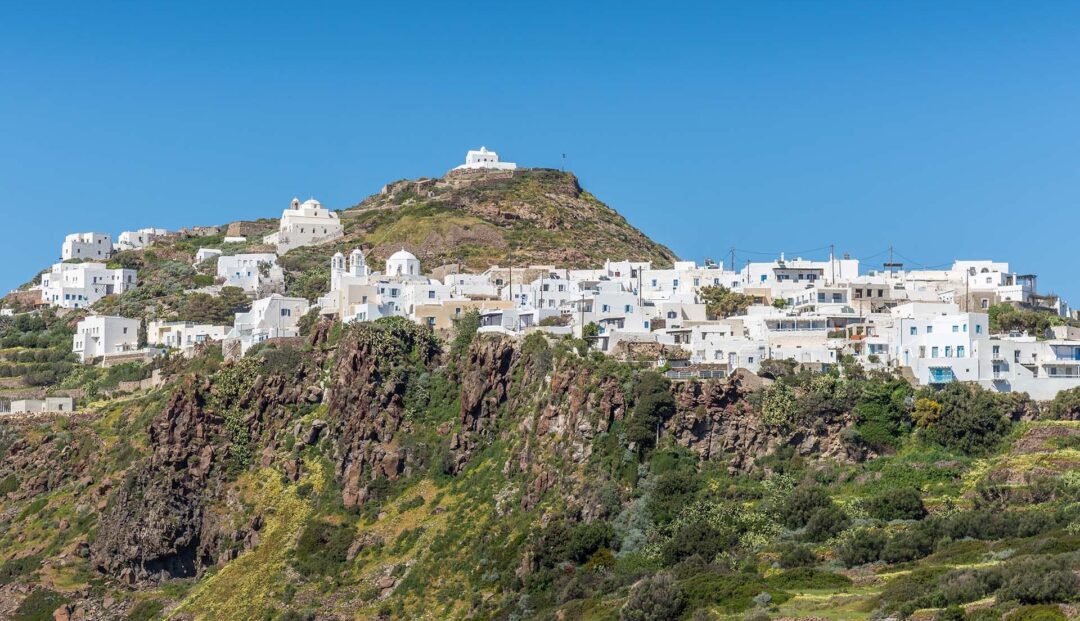
Tripiti, a traditional well-preserved settlement, almost united with Plaka (the capital of the island), built amphitheatrically over the ruins of the classic city of Klima. Its name is due to its soft volcanic rocks, which looked like holes, as well as to the many holes that are carved in the rock on which it is built. (Source: visit.milos.gr)
Located in the southwest part of the Cyclades, Milos boasts a unique range of natural landscapes shaped by volcanic activity. This is reflected in the island’s abundance of hot springs, caves, and geological formations.
Milos has a rich history that dates back to ancient times. The island was inhabited as early as the Neolithic period, and its strategic location made it a significant trading hub in antiquity. It was known for its mineral resources, particularly high-quality obsidian, which was used for tools and traded across the Aegean. During the classical era, Milos became famous for its marble. The island is home to numerous significant archaeological sites, including the Bronze Age settlement of Phylakopi, the ancient city at Klima (where the renowned marble statue of Venus of Milo was discovered), the early Christian catacombs, and several interesting museums, such as the Mining Museum, which showcases Milos’ 11.000-years-old mineral history.

The “Lady of Phylakopi”, wheel-made figurine of a goddess or priestess, 45 cm, Late Helladic IIIA period, Phylakopi III, 14th c BC (left), Pithos jar from Phylakopi III, 14th c BC (right), Milos Archaeological Museum
The Archaeological Museum of Milos is housed in a neoclassical building of 1870, designed by Ernst Ziller. The museum’s exhibits date from the Neolithic period until Late Antiquity and have been aggregated from the important Prehistoric settlement of Phylakopi in their majority, as well as from other sites of the island. (Source: archaeologicalmuseums.gr)
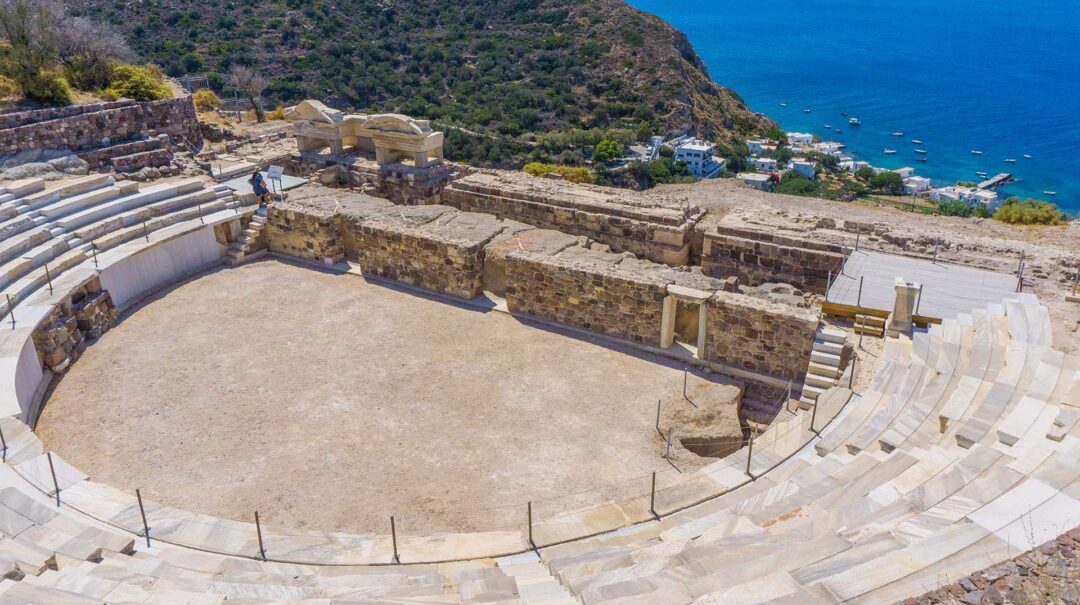
The ancient Roman Theater was originally built by the inhabitants of the ancient city of Klima, probably during the Hellenistic era (3rd century BC). However, after the destruction of the city by the Athenians, on top of the surviving bases of the classical building was built a larger one with Parian all-white marble and wonderful reliefs, during the Roman years, which is estimated to hold about 7,000 spectators. (Source: visit.milos.gr)
With more than 75 beaches around the island, Milos is blessed with stunning and pristine shores. This volcanic land, a true wonder of nature, has become a renowned and beloved destination, featuring dramatic lacy shores sculpted by strong winds and powerful waves. Milos boasts an impressive variety of beaches, some with soft white sand, others with pebbly bays surrounded by stones and rocks in shades of white, red, yellow or even black. Visitors can choose from fully organized beaches or quieter, wilder spots with unique colors and varying depths in the sea.
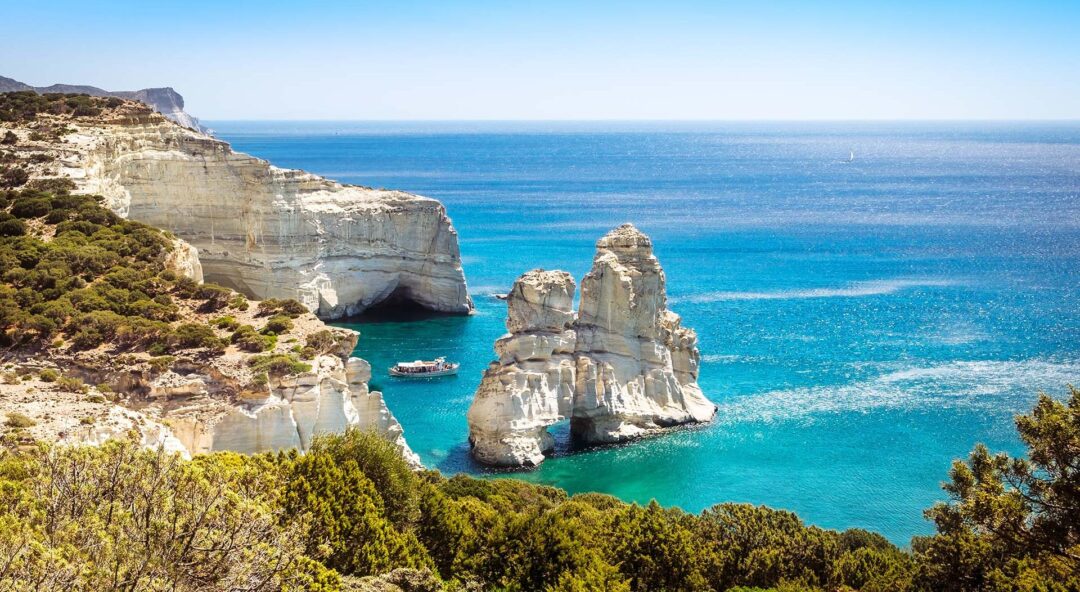
Kleftiko, located in the south of the island, is a remarkable set of gray and white rocks with unique shapes and formations, some of which lead to sandy beaches. Caves and pits, created over centuries by the forces of air and sea, add to its intriguing landscape. The area was once used as a shelter and base by pirates, which is how it got its name. (Source: visit.milos.gr)
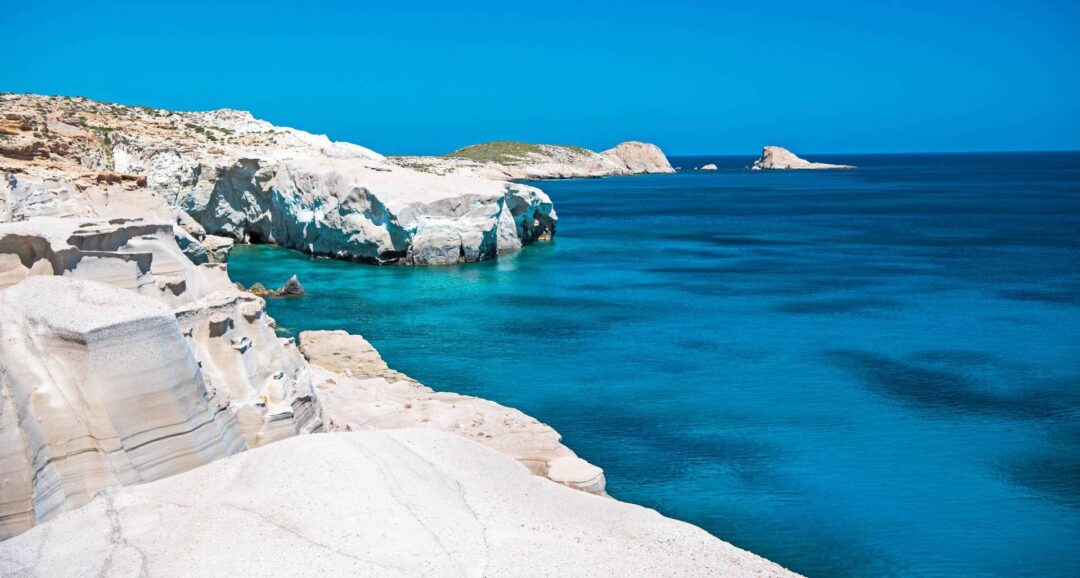
Sarakiniko, the most famous beach in the north of the island, is renowned for its unique lunar landscape. The beach gets its name from its historical use by pirates as a shelter, and the ship’s bollards, still carved into the rock, are a testament to this. The striking whiteness of the rocks, combined with the lack of vegetation, creates a one-of-a-kind atmosphere that visitors are unlikely to forget. (Source: visit.milos.gr)
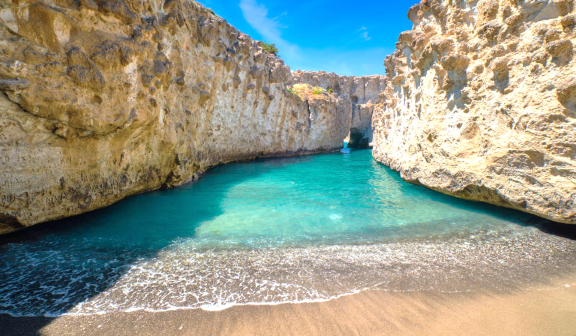
Next to the ruins of the ancient city of Phylakopi, in the north of the island, are the three caves of Papafragas. Visitors can descend a steep carving in the rock to swim in the turquoise waters, surrounded by gray and white rocks that lead out to the open sea. (Source: visit.milos.gr)
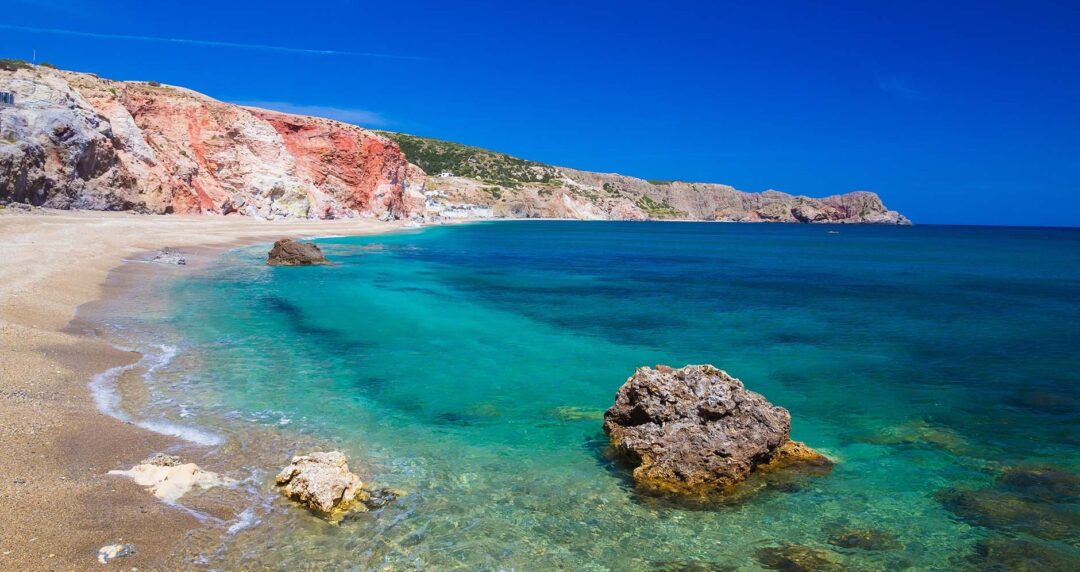
Paliochori beach, located in the south of the island, stretches nearly 2 km and is extremely popular. It features colorful pebbles, coarse sand, and crystal-clear waters. Visitors have the opportunity to experience unique and striking views, a result of the volcanic energy and geological vitality of the area. (Source: visit.milos.gr)
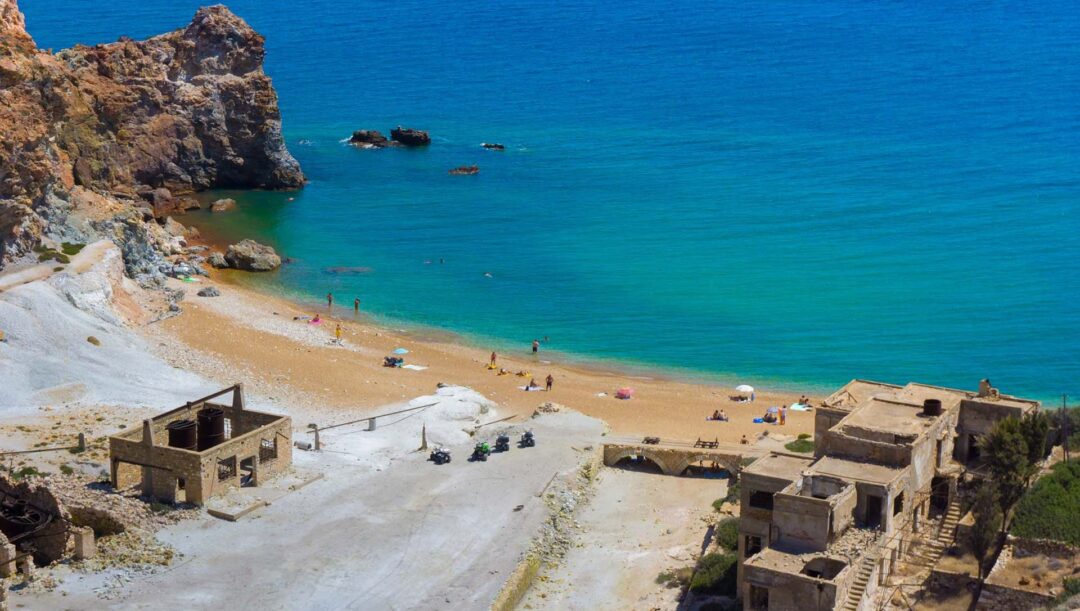
Theiorycheia (the sulfur mines) is one of the island’s geological attractions, where visitors can observe wagons on their tracks, old rusty tools, and unused spare parts in the warehouse, all while enjoying a swim in the clear waters and exploring the wild, mysterious landscape. The sulfur mines were in operation until 1956. (Source: visit.milos.gr)
Read also: Cycladic architecture, stunningly blending with the endless blue of the Aegean Sea
I.A.
TAGS: AEGEAN | ARCHITECTURE | CULTURE | CYCLADES | HERITAGE | TOURISM

